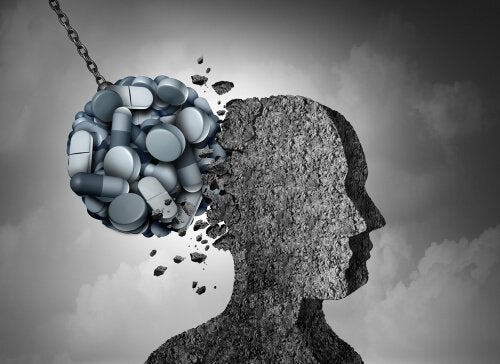America’s severe health crisis today over the opioid dependency epidemic is putting the country and its institutions in great difficulty. The problem is serious because, for the time being, the authorities have not yet managed to find a short-term solution.
80% of the world’s opioid production, whether consumed by prescription or from illegal sources, is produced in the United States. Health services fail to cope with the countless deaths caused by opioid use.
- It is estimated that around 200 people in the country die each day from opioid addiction.
- In addition.
- The total number of drug-related deaths is already equivalent to the deaths of U.
- S.
- Soldiers during the Vietnam War.
Data published today on the high incidence of addiction that opioid use such as Oxycontin, known as oxycodone hydrochloride, or morphine derivatives, such as fentanyl, raise all alarms. Statistics talk about addiction in more than 10% of patients during the first five days of use alone.
This crisis has been declared a “national public health emergency. “We will then discuss what opioids are, how they work in the human brain, and what studies are currently being conducted on these drugs.
“As soon as the addict finds a deeper path of satisfaction than that obtained by self-destructive behavior, the exit will open naturally for him. -Deepak Chopra-
Opioids are analgesics whose active ingredients are extracted from opium seeds. These are long-known natural substances found in poppy seeds. In 1803, an opium alkaloid was ingilised; subsequently, derivatives such as codeine and heroin were developed.
Opioids or narcotics are a powerful pain reliever prescribed for acute or chronic pain, especially for cancer-related pain. The problem is that there are many risks associated with their consumption, including the high rates of dependence they generate in patients.
We say patient because many of these addicts have been prescribed medication after surgery, an accident or a broken bone, for example.
Until 1914, opium was legal in the United States, but it was banned by the high tolerance it generates and the severe withdrawal syndrome it causes, it is one of the most addictive drugs in the world because it reaches the brain very quickly. produces a powerful effect of analgesia, drowsiness and rewarding sensations of pleasure.
There are three types of opiate substances
All abuse drugs activate the gratification pathways of the brain system. This system includes the ventral area of the tegment, the accumbens nucleus and the prefrontal cortex. Pain perception involves the participation of various neural structures.
Through the associated pathways, this substance reaches the regions of the brain trunk and the diencephalus, including the thalamus and the periacueducal grey substance; In addition, synapses occur in the thalamus, projecting to other areas such as the frontal lobe, limbic system or hypothalamus. Mainly.
Opioids act in the related system (the pathways through which the stimulus moves into the brain), but they also do so in the efferent system (reverse direction). In addition, they activate the excellent connections between the periaductal gray matter and the cores of the rafe. Painful stimulus is reduced by inhibiting interneurons that contain GABA.
There are countless precedents that this opioid use crisis has opened up, there is a very high demand for assistance to people who have developed an addiction to these drugs, in the absence of new prescriptions, these people turn to the illegal market and replace them with heroin drugs because they are cheaper and easier to obtain.
Mount Sinai’s Florida research team is doing remarkable work, focusing on an intracellular network that controls the actions of opioids in the periucductal substance, as this network plays a very important role in the analgesic response.
These researchers managed to block the RGSz1 gene, responsible for encoding the negative modulator of opioid tolerance, the result was a significant reduction in pain with much lower doses of medication, in addition, the effect of the drug is less rewarding, an important factor in the development of addiction.
The team is currently evaluating prescription opioids. They want to classify them according to their abuse potential based on the RGS protein they activate. Therefore, their results can be decisive in the fight against this severe epidemic of opioid use.

